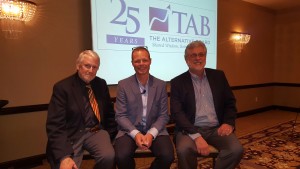Another tax filing season has passed, and the entire US accounting profession comes up for air. Of course, thousands of businesses and individuals have filed for extensions, thereby postponing the pain of calculating their final numbers for anywhere from a few days to six months.
As the CPAs emerge from their winter burrows and blink in the sun, the rest of the business community reenergizes, suddenly able to move forward with planning and analysis that has been languishing while their numbers-crunchers were busy losing sleep and feasting on ramen noodles.
I met with one firm about doing some valuation work in late February. They appeared to be excited about getting the business. When I called in mid-March with my first project they responded with “It’s tax season. Can you wait until mid-May?”
Perhaps it isn’t totally illogical to expect that an exiting business owner, having spent 30 years developing his largest single asset, should be willing to wait a few more months to begin his transition. The question isn’t so much whether it is unreasonable; it is why it should be necessary.
I have multiple clients with various needs, but all require some interface with their accountant. Some CPAs respond with quick but unsettling responses. “I think you can do this, but you’ll have to wait until after tax season for a definite answer.” Great. Business people always like making million dollar decisions based on “Maybe or maybe not.”
Others simply beg off. “I can’t even take the time to think about that until after April 15th.” Still others don’t respond at all, obviously expecting that their clients will automatically forgive what would be an unforgivable breach of professional service expectations at any other time.
Even the definition of “any other time” is narrowing. The tax rush used to be the few weeks leading to April 15th. Then the weeks leading to March 15th (the business filing deadline) moved back the start of the out-of-service CPA season. With the increasing complexity of tax laws, and the concomitant rise in extension filings, the time between September 1st and October 15th has also become a no fly zone. The week or two leading up to May 15th and June 15th are slightly better, but not by much.
 Tax complexity makes handling almost any transaction without professional advice foolhardy, but are we really supposed to just draw a line through 16 weeks, or 1/3 of the annual business cycle?
Tax complexity makes handling almost any transaction without professional advice foolhardy, but are we really supposed to just draw a line through 16 weeks, or 1/3 of the annual business cycle?
There are lots of suggestions about how to simplify the code or spread out the reporting deadlines. A flat tax is interesting, but would largely remove the ability of legislators to show favoritism to big supporters and home-state causes, so I’m skeptical of its chances.
Another proposal is to let individuals file by their birthdays, or let calendar-year businesses pick another year-end. The government’s excuse is that it would delay revenues for the year of implementation. Really? Like they were planning on a balanced budget that year? Heaven forbid they would have to borrow any more than the $1,000,000 a minute they do already.
Until we find some more sensible way to fund the public sector, business owners are subject to double indemnity. Not only do we have to pay the bill, but doing so correctly requires that we also at least partially delay our attempts to earn the income that will be taxed.




